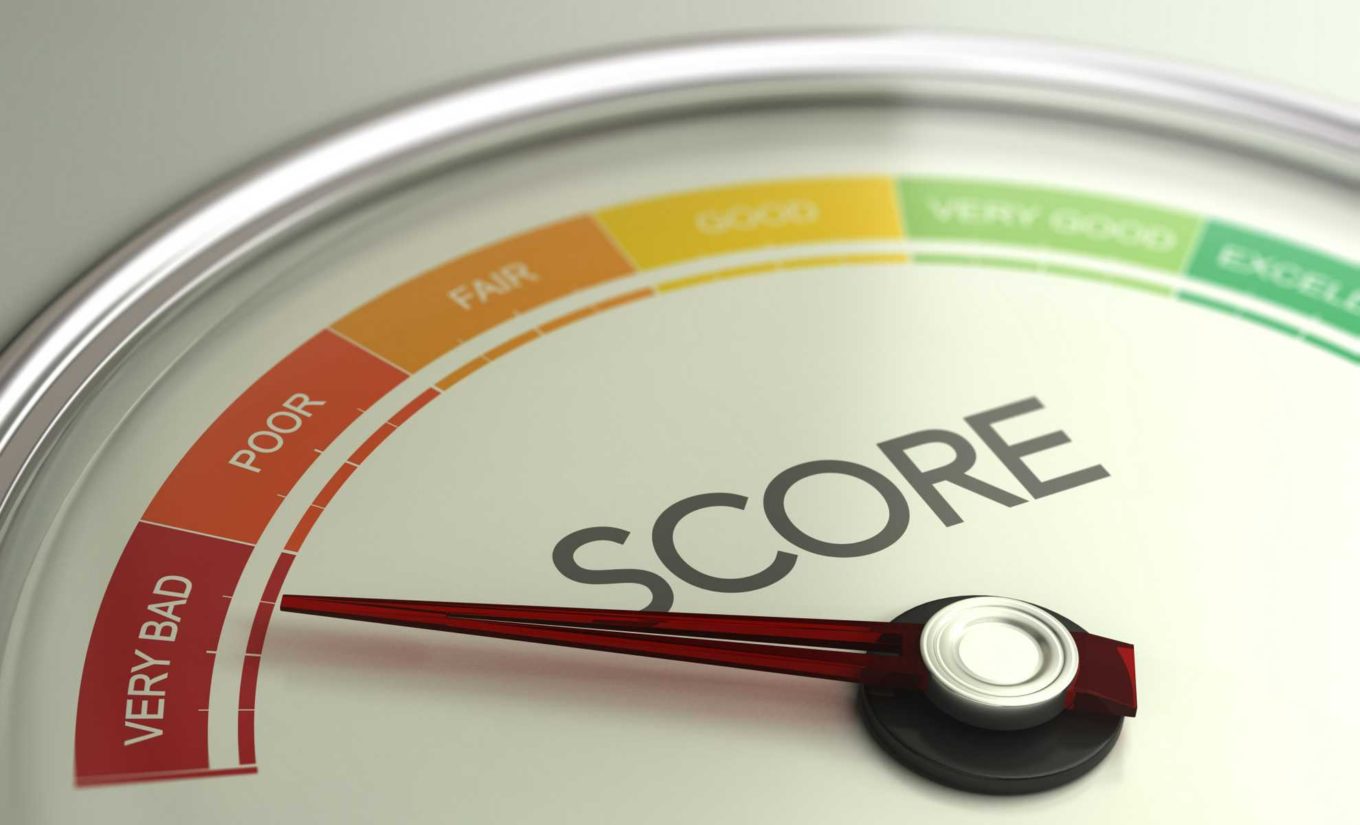If you’ve recently filed for bankruptcy or are preparing to do so, you’re not alone. Believe it or not, over 434,000 Americans filed for bankruptcy in 2021, and even more in years prior.
Fortunately, bankruptcy doesn’t have to be the end of the world for you or anyone else who’s filed it. With the right tools, you can rebuild your credit score in a shorter time than you think. Let’s talk about that!
Components of a Credit Score
Before we talk about how to rebuild your credit score, we first need to understand how it works. Your credit score is a 3-digit number ranging from 300 to 850, and 5 key factors determine it with some other potential influences.
To clarify, 300 is the lowest score can go, but any score below 540 is generally considered a low score. Many creditors may not lend to a borrower with a credit score below 600, and 680 is a standard threshold for certain loans.
Don’t worry about getting your score to 850 or even breaking 800. There’s a strong chance you could do everything right in your credit life and never break 800. The average score is 714 in the US, and that should help you get approved for most loans!
Generally speaking, anything above 680 or 700 is considered good, and above 750 is considered excellent. Now that you understand the scoring, let’s talk about the factors that influence that score.
Payment History
It should come as no surprise that the history of your credit payments is the top factor in your credit score. Believe it or not, your payment history accounts for a whopping 35% of your credit score, barring any derogatory marks or other influences. If you keep your payment history at 100%, that alone will build a strong foundation for your score.
Even if you’re filing for bankruptcy, try your best not to miss a payment, even if it’s the minimum amount. This includes installment loans like car payments and minimum payments on revolving lines like credit cards.
If you miss a payment’s due date, it’s not the end of the world. Depending on your lender, you’ll probably owe a late fee, which could be anywhere from $5 to $100 (the average is $36.34), but it won’t affect your credit score unless you reach 30 days past due. After the 60-day and 90-day thresholds, these payments could be considered “delinquent,” affecting your score even more.
Any issues with your payment history, especially a “delinquent payment” mark, are likely to stay on your score for up to seven years.
Credit Utilization
The utilization of your revolving lines of credit can account for up to 30% of your score. Generally speaking, you should try to keep these under 20% of your maximum credit limit, and under 10% is even better!
Let’s say your credit card has a $20,000 limit. That doesn’t mean you can’t spend more than $4,000 (20%) on your credit card at a time. Rather, it means you can’t leave a balance over that if you want to boost your score.
In most cases, a balance of under 50% won’t damage your score much, but it certainly won’t help! On the other hand, a balance of 1% to 4% every month would look excellent, especially if you’re actively making purchases with the card!
Length of Credit
The age of your credit history is important, and it uses averages to factor this. If the average length of your credit lines (installment and revolving) is only one year, creditors will view this as fairly risky. However, if you’ve maintained your credit cards in good standing for ten years, then this will show creditors they can trust you in the long run.
Unfortunately, the only way to improve this factor is with time, so keep your credit lines open and in good standing when possible. This factor accounts for 15% of your credit score.
Hard Inquiries/Credit Mix
“New credit” is usually the term used for the first portion we’ll discuss, but it’s measured primarily by the number of hard inquiries into your credit report. This factor will only account for 10% of your credit score, and having a few inquiries is not a big deal at all. At most, they’ll last on your score for two years, but that’s hardly ever the case.
In most cases, especially if there are only one or two inquiries at a time, they’ll be removed within a month or two. However, if you’re opening new lines of credit or having your score looked into multiple times, it could harm your score in the short term.
For credit mix, which also accounts for 10% of your score, creditors want to see how well you handle multiple lines of credit simultaneously. If you have several installment loans and revolving lines of credit in good standing, this will ultimately help your credit score.
Other Factors
There are other factors or conditions that are less common, but may affect your credit score. The one we’re going to focus on is bankruptcy, as this can set back your score between 130 and 150 points. However, there is good news.
Like all components of your credit score, bankruptcy will only last on your credit score for a maximum of ten years after the filing date and often sooner. Fortunately, that gives you time to rebuild your credit.
How to Rebuild a Credit Score After Bankruptcy
Bankruptcy doesn’t have to be the end of the world, especially if you’re willing to take the time to rebuild. Let’s talk about how to improve your credit score after bankruptcy.
Take Action Right Away
The longer you wait to rebuild your credit, the longer it will be before you see results. Taking immediate action is essential, and that means continuing to use credit.
While that may sound counterintuitive after bankruptcy, using credit is the only way to boost your score. If you want to play it safe, you can start with a secured line of credit, like a HELOC or secured credit card. These typically have lower interest, collateral, and still boost your credit.
It may be difficult to find unsecured loans, especially right after filing bankruptcy, so starting with a secured line could help you rebuild as quickly as possible and limit the number of hard inquiries your receive.
Consistency
With enough patience and consistency, you will see a substantial improvement in your credit score. Just because it drops your score by 130 to 150 points once doesn’t mean you’ll always be at that much of a deficit. If you’re consistent enough with the best practices mentioned above, you will eventually see substantial improvement.
However, this takes time to come to fruition. It could be years before you have “good credit” again, so this may not be the best stand-alone strategy for short-term gains, but it’s still important in the long run.
Fight for Your Credit Score
If you’ve filed for Chapter 7 bankruptcy, which is the immediate wipeout of all unsecured debts, there’s a lot you can do with the right legal help. If you follow the tips above and consult a trusted bankruptcy attorney, you can see results as soon as possible.
If you’ve filed for Chapter 13 bankruptcy, which means you develop a payment plan for your debts (including a mortgage), then it’s even easier to rebuild credit. Talk to an experienced Philadelphia bankruptcy attorney and get the help you need to get a 720 credit score today.
How Soon Will My Credit Score Improve After Bankruptcy?
Now that you know how to rebuild your credit score as quickly as possible after filing for bankruptcy, one of the most common questions is how long it will take. If you’re planning on buying a house or car in the next decade, then ten years isn’t quick enough.
In most cases, if you have the right legal help and take action immediately, you could see substantial improvement in your score within 12 to 18 months. If you take the actions mentioned above and stay as consistent as possible, you could start seeing results within the first few months.
Remember, your credit rating sets many limits on your life. If you want more mobility and freedom to do what you want in your life, then it’s important to give yourself every opportunity for success.
Rebuild Your Credit Score Today, Call Us at 215-545-0008.
Now that you know how to rebuild your credit score as quickly as possible after filing for bankruptcy, don’t wait another minute. It’s important to start rebuilding immediately to avoid limiting yourself in the future, so start rebuilding today!
Stay up to date with our latest legal and financial tips, and if you’re in Pennsylvania, contact us with any questions or for help with your credit!





